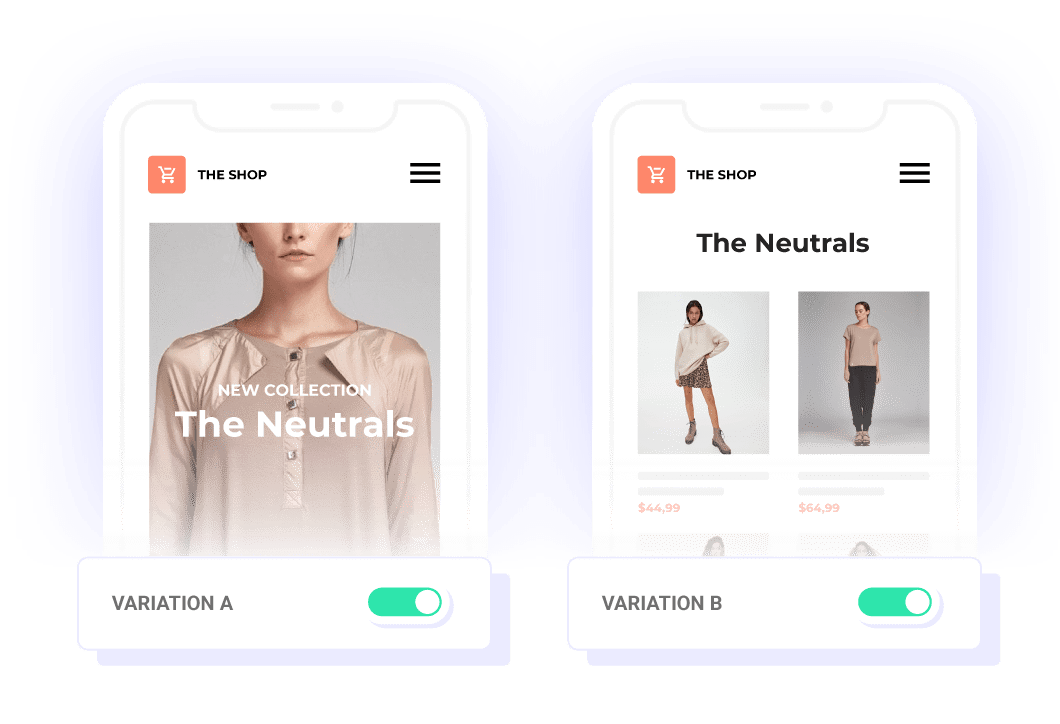In this article:
– A definition of A/B testing, its benefits, and how to use it effectively.
Definition
A/B testing is an online experiment conducted on a website, mobile application or ads (among other things), to test potential improvements in comparison to a control (or original) version. Put simply, it allows you to see which version works better for your audience based on a statistical analysis.
A/B testing is also known as split testing, which can be either exactly the same thing as A/B testing OR it can mean split URL testing. For a traditional A/B test, the 2 variations are on the same URL, whereas in split URL testing your changed variation is on a different URL (your visitor doesn’t see the difference, of course).
You compare the current version (control) of a page/element against one (or more) variation(s) of it with the changes you want to test (a website page, an element on a page, a CTA, an image, etc.). You divide your traffic into equal portions, then they are randomly exposed to one or the other variation during a given period of time. Then, their performances (conversions, sales…) are compared and analyzed to determine if the change(s) are worth implementing.

What are the benefits of A/B testing?
Why should YOU conduct A/B testing? A better question could be: are you satisfied with the way you’re exploiting your hard-earned traffic? Once you have traffic, increasing your conversions is much less expensive, with great potential ROI. And with A/B testing, it’s even greater. But that’s not all, here are some other benefits:
- Learn about your audience in depth with every test: what they like, how they react, their needs and habits.
- Remove gut decisions from your marketing strategy by adopting a culture of experimentation and testing everything.
- Focus your time and money on what your visitors respond to best, thanks to what you learn from your A/B experiments.
Examples
And to give you more operational examples of questions you’ll be able to answer with A/B testing:
- Should you have long or short forms?
- Should you implement this new feature?
- Which title for your article generates more shares?
- Which steps of your conversion funnels are underperforming?
